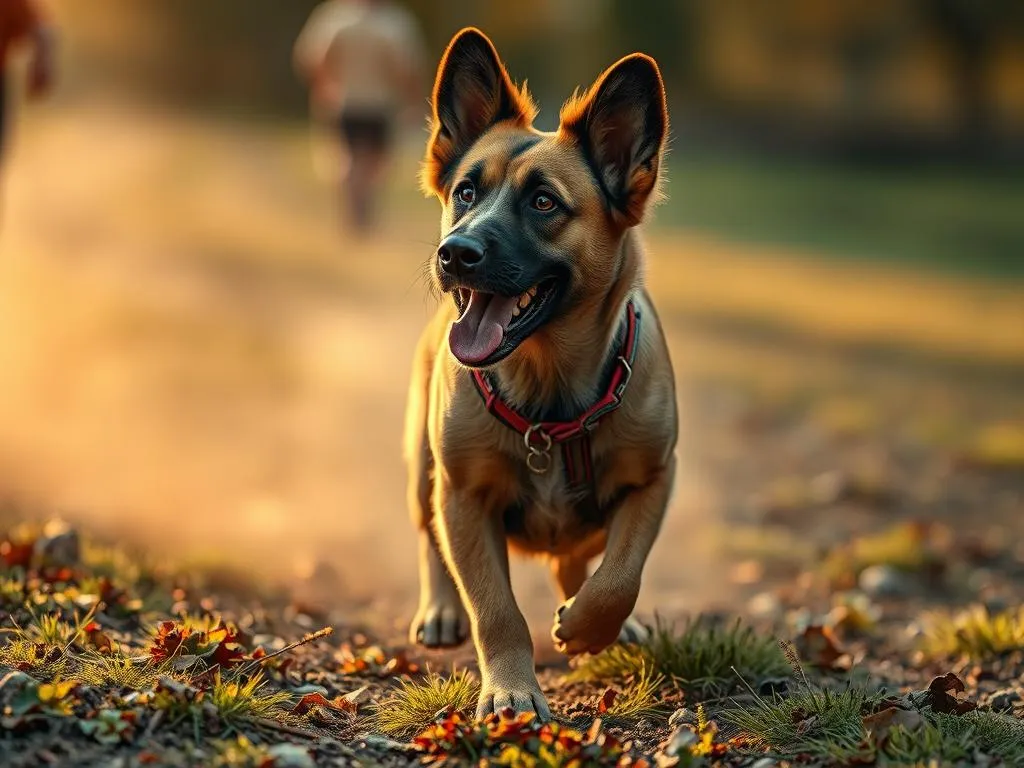
Introduction
Dog health care is an essential aspect of responsible pet ownership, and understanding the intricacies of a dog’s reproductive cycle is crucial for maintaining their overall well-being. One of the most significant phases in a female dog’s reproductive life is the dog heat cycle. This cycle, also known as estrus, not only plays a vital role in breeding but is also an indicator of your dog’s health. As a dog owner, being informed about the heat cycle can help you provide better care for your furry friend and manage their health proactively.
Understanding the Dog Heat Cycle
What is the Heat Cycle?
The heat cycle refers to the periods of fertility in female dogs, allowing them to conceive. This cycle can be quite different from the reproductive cycles of other animals, such as cats or livestock. Dogs typically experience their first heat cycle between six months and two years of age, depending on their breed and size. Unlike some animals that have a seasonal breeding pattern, dogs can go into heat multiple times a year, making it essential for owners to understand the signs and stages of this cycle.
The Stages of the Heat Cycle
The dog heat cycle consists of four distinct stages: Proestrus, Estrus, Diestrus, and Anestrus. Understanding these stages helps dog owners recognize and manage their pets during this time.
-
Proestrus: This stage lasts about 7 to 10 days. During Proestrus, you may notice swelling of the vulva, bloody vaginal discharge, and increased urination. Dogs may also become more affectionate or restless during this phase.
-
Estrus: Lasting approximately 5 to 14 days, Estrus is when the female dog is receptive to mating. The discharge may change to a lighter color, and the vulva remains swollen. Signs of receptivity include increased interest in male dogs and a change in behavior, such as seeking attention.
-
Diestrus: This stage occurs after Estrus and can last about 60 to 90 days. During Diestrus, hormonal changes occur, and the dog may exhibit signs of pregnancy if fertilization has occurred. If not pregnant, the dog will eventually return to a normal state.
-
Anestrus: The resting phase between heat cycles, Anestrus can last anywhere from a few months to several years. During this time, the dog’s reproductive system is inactive, and she will not show any signs of being in heat.
Signs Your Dog is in Heat
Physical Signs
Recognizing the dog heat cycle involves observing several physical signs:
- Swelling of vulva: The vulva will appear enlarged and more prominent than usual.
- Changes in discharge: The discharge may vary in color and consistency throughout the cycle, starting with a bloody discharge during Proestrus and lightening during Estrus.
- Increased urination: Dogs may urinate more frequently or mark their territory as a way to signal their reproductive readiness.
Behavioral Changes
In addition to physical signs, behavioral changes can indicate a dog is in heat:
- Increased affection or restlessness: Dogs may seek more attention from their owners or appear restless and anxious.
- Changes in appetite: Some dogs may eat less or show disinterest in food during the heat cycle.
- Seeking male dogs: Female dogs in Estrus will often display a desire to be around male dogs, which can lead to attempts to escape.
The Importance of Tracking the Heat Cycle
Why Monitoring is Essential
Monitoring the dog heat cycle is crucial for several reasons:
- Breeding purposes: Understanding your dog’s heat cycle can help you plan for responsible breeding, ensuring the right timing for mating.
- Health implications: Irregular heat cycles can indicate underlying health issues, so tracking the cycle can help identify potential problems early.
- Managing unwanted litters: Keeping track of the heat cycle is critical for preventing unplanned litters, which can have significant implications for both your dog and the community.
How to Track the Heat Cycle
Tracking the dog heat cycle can be straightforward with a few tips:
- Keep a record: Use a calendar or journal to note the start and end dates of each heat cycle, as well as any physical or behavioral changes you observe.
- Use tracking apps: Several mobile apps are designed to help pet owners track their dog’s heat cycles, providing reminders and insights.
Health Care Considerations During the Heat Cycle
Nutrition and Care
During the dog heat cycle, it’s essential to make some dietary adjustments:
- Recommended dietary adjustments: Consider feeding your dog a high-quality, balanced diet that supports overall health. Some dogs may require extra calories during this time due to increased activity levels.
- Importance of hydration and exercise: Ensure your dog has access to fresh water at all times, and engage in moderate exercise to keep her healthy and comfortable.
Veterinary Consultations
Consulting a veterinarian during the dog heat cycle can be beneficial:
- When to consult a vet: If you notice any irregularities in your dog’s heat cycle or if she shows signs of distress, consult a veterinarian for advice and potential examination.
- Importance of vaccinations and preventive care: Keeping your dog up to date on vaccinations and preventive care is vital for her overall health, particularly during reproductive cycles.
Common Misconceptions About the Heat Cycle
Myths vs. Facts
There are several misconceptions surrounding the dog heat cycle that need clarification:
-
Myth: Dogs only go into heat once a year.
Fact: Most female dogs experience heat cycles every six to twelve months, depending on their breed and individual health. -
Myth: Spaying eliminates all health issues related to the heat cycle.
Fact: While spaying can prevent certain health issues, some problems can still arise in spayed dogs, and spaying does not guarantee complete immunity from all reproductive health concerns.
Clarifying the Facts
Understanding the dog heat cycle helps dispel common misunderstandings. Educating yourself about your dog’s reproductive health can prevent unnecessary worry and ensure you provide optimal care.
Options for Managing the Heat Cycle
Spaying: Pros and Cons
Spaying is a significant decision for dog owners regarding managing the dog heat cycle:
- Benefits of spaying: Spaying prevents heat cycles altogether, reducing the risk of unwanted litters and certain health issues, such as uterine infections and mammary tumors.
- Considerations and potential downsides: Some owners may worry about the potential risks associated with surgery, as well as the hormonal changes that come with spaying. Discuss these concerns with your veterinarian to make an informed decision.
Managing a Dog in Heat
If you choose not to spay your dog, there are several strategies for managing her during the heat cycle:
- Tips for handling a dog in heat: Keep your dog indoors and supervise her closely to prevent escape attempts. Use doggy diapers if necessary to manage discharge.
- Preventing unwanted breeding: Ensure your dog is kept away from male dogs during her heat cycle to avoid unplanned pregnancies.
- Behavioral management techniques: Engage your dog in activities that distract her from seeking male dogs, such as playtime or training exercises.
Conclusion
Understanding the dog heat cycle is a fundamental aspect of responsible dog ownership and health care. By being proactive about this cycle, dog owners can ensure their pets receive the right care and attention during their reproductive years. Staying informed about the signs and stages of the heat cycle, along with health care considerations, empowers dog owners to make the best decisions for their furry companions.
As you navigate the complexities of your dog’s reproductive health, remember that responsible pet ownership extends beyond daily care. It involves being proactive, informed, and attentive to your dog’s needs throughout her life.
FAQs
How often do dogs go into heat?
Most female dogs go into heat approximately every six to twelve months, depending on their breed and health.
At what age does a dog first go into heat?
Dogs typically experience their first heat cycle between six months and two years of age.
Can a dog get pregnant during her first heat?
Yes, a dog can become pregnant during her first heat cycle, so it’s important to take precautions if you do not intend to breed her.
What should I do if my dog is in heat and I don’t want to breed her?
If you do not wish to breed your dog, keep her indoors, supervise her closely, and consider using doggy diapers to manage discharge. Spaying is also an option to prevent future heat cycles.









